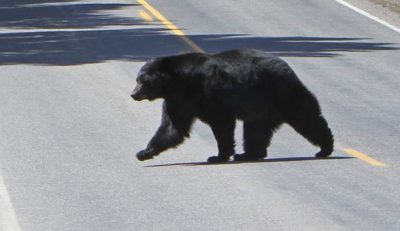Bears continue to be the number one animal when it comes to human-wildlife conflict this year according to BC’s Conservation Officer Service.
Mike Badry is the wildlife conflict manager with the province’s Ministry of Environment.
“The fall period is very year a time when we’ll see an increase in conflicts with bears due to the fact that these bears are trying to put on weight for denning throughout winter so they’re highly motivated to find food. That’s where we really put the emphasis on attractant management.”
Of the more than 20,000 human-wildlife conflicts to date across the province, over 14,000 have been associated with black bears, according to Deputy Chief Conservation Officer Chris Doyle.
He says attractants such as garbage, ripen fruit, and bird seed need to be contained where they are inaccessible to bears, and adds that it’s an offence to negligently store attractants that may attract dangerous wildlife.
“On September 27th, the COS executed a search warrant near Blue River to seize evidence relating to an investigation under the wildlife act that prohibits persons from feeding or attempting to feed, or placing attractants on land for dangerous wildlife which includes bears, cougars, wolves, and coyotes.”
“Maximum penalties for this offence under the wildlife act are $100,000 and or one-year imprisonment.”
Meanwhile, over 430 of the conflicts have been associated to grizzly bears with 1,500 associated to cougars.
Two separate grizzly attacks on hunters have been investigated by COS.
Doyle says the first attack occurred near the Yukon border, in which a grizzly attacked a hunter causing injury to the hunter’s head and face.
The bear, which was emaciated, was shot and killed by the hunter’s partner during the predatory attack.
Doyle says the second attack occurred near the Fernie area, in which a hunter sustained minor injuries after a ‘surprise’ encounter with a sow and cub.
Officers determined the attack to be defensive in nature as the sow was protecting, and did not attempt to capture it.
– with files from Rebecca Kelli, My Cariboo Now


